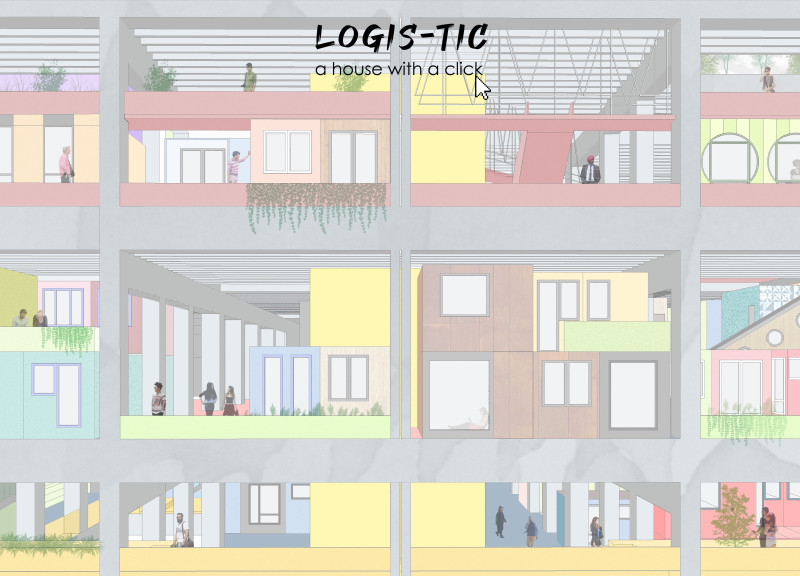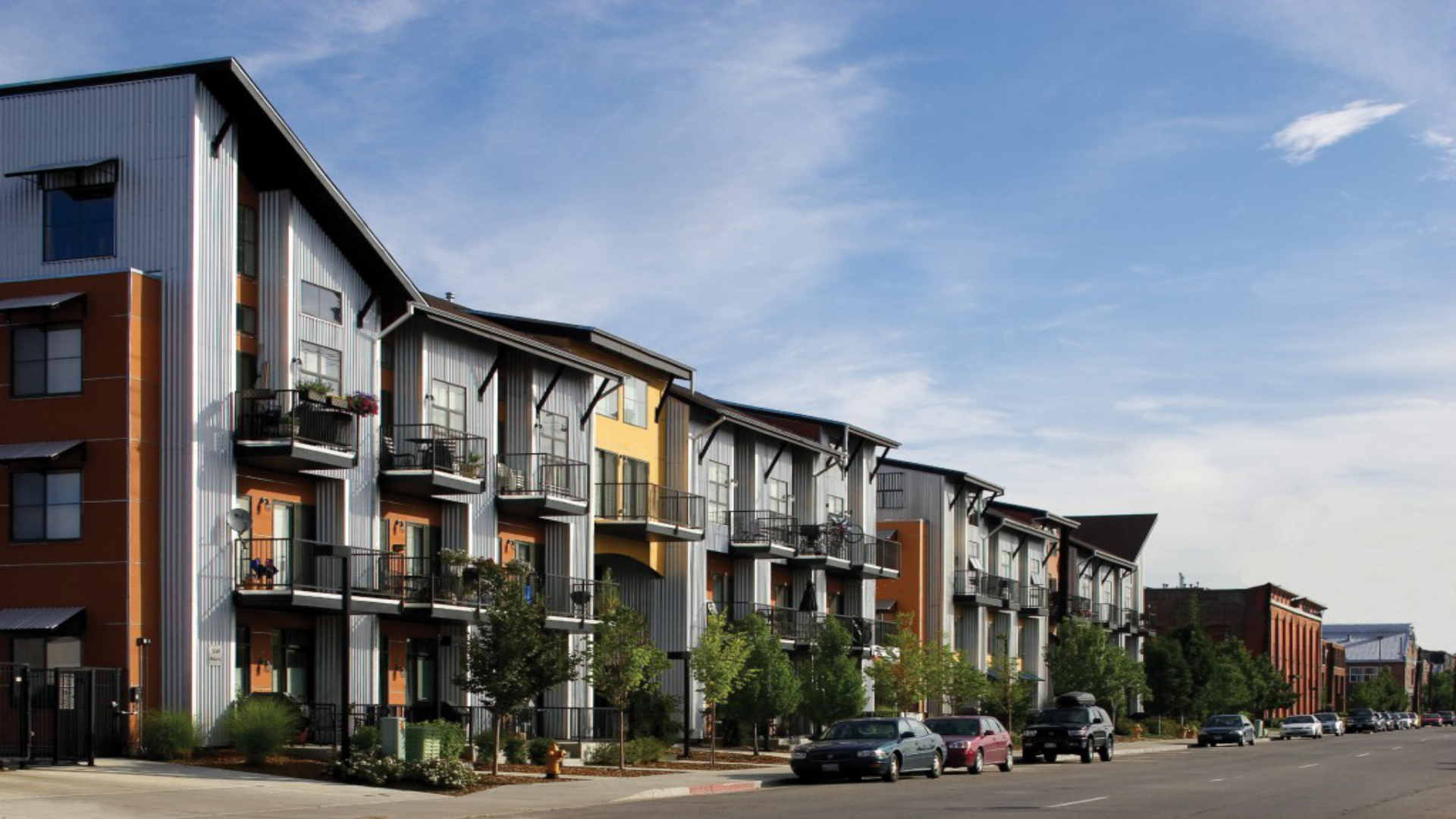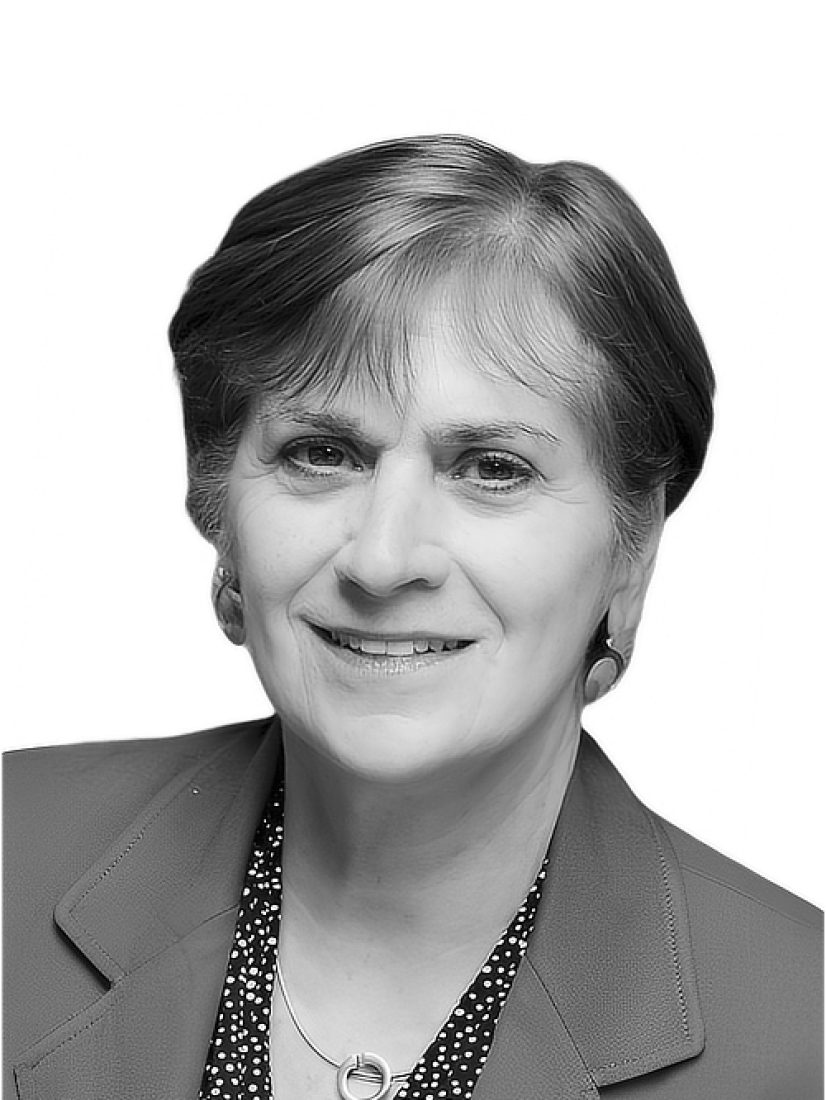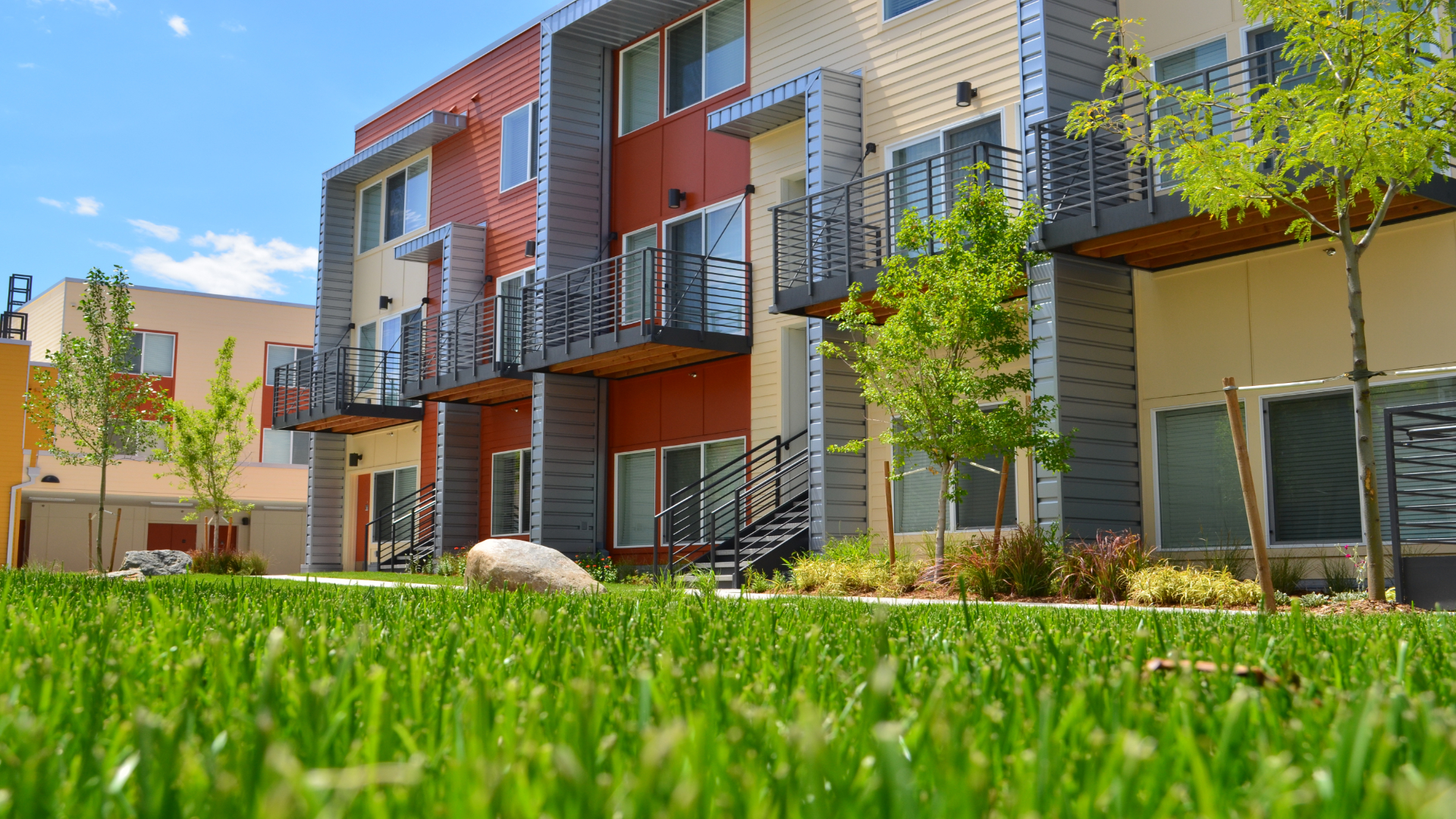5 key facts about this project
The design focuses on transforming logistics structures in Paris into residential units suited for modern living. Located in a vibrant urban environment, the initiative seeks to tackle housing shortages and urban density issues while improving residents' quality of living. The concept highlights the importance of engaging individuals in the planning process, enabling them to influence their living spaces directly.
Design and User Participation
The design builds on Yona Friedman’s ideas about self-planning, which emphasize involving future residents in shaping their environments. This engagement is essential because those who take part in the design are better prepared to address future challenges during construction. By encouraging participation, the design aims to create spaces that reflect the diverse needs of people living in the city.
Repurposing Logistics Spaces
Existing logistical sites, such as warehouses, form the foundation of this approach. These structures offer a modular design potential that allows for flexible living arrangements. The layout includes communal areas that promote social interactions, fostering a sense of community among residents in these newly imagined spaces. This is crucial for creating a shared identity in the neighborhood.
Responding to Urban Needs
The design also takes into account the drawbacks of living near logistics sites, particularly the noise from loading and unloading activities. By converting these underused areas into homes, the project confronts urban density issues and maximizes opportunities for affordable housing. This strategy enhances the overall character of the city while still offering practical living solutions.
Planning for the Future
As Paris shifts toward reduced motor vehicle use, especially for large, polluting trucks, the design anticipates changes in urban dynamics. With this reduction, more space becomes available in the converted logistics structures, making them ideal candidates for residential use. The design envisions these spaces being utilized for important events, like the upcoming Olympic Games, thereby addressing immediate housing needs while providing long-term living options for the community.
Overall, the design emphasizes adaptability and community engagement. Thoughtful details highlight the modular nature of the spaces, encouraging a mix of private and shared areas that enhance daily life. This balance of functionality and livability is essential in creating a sustainable urban environment.























































